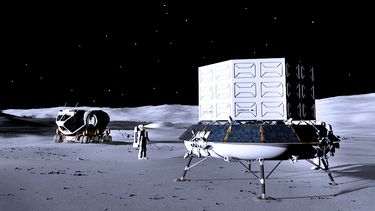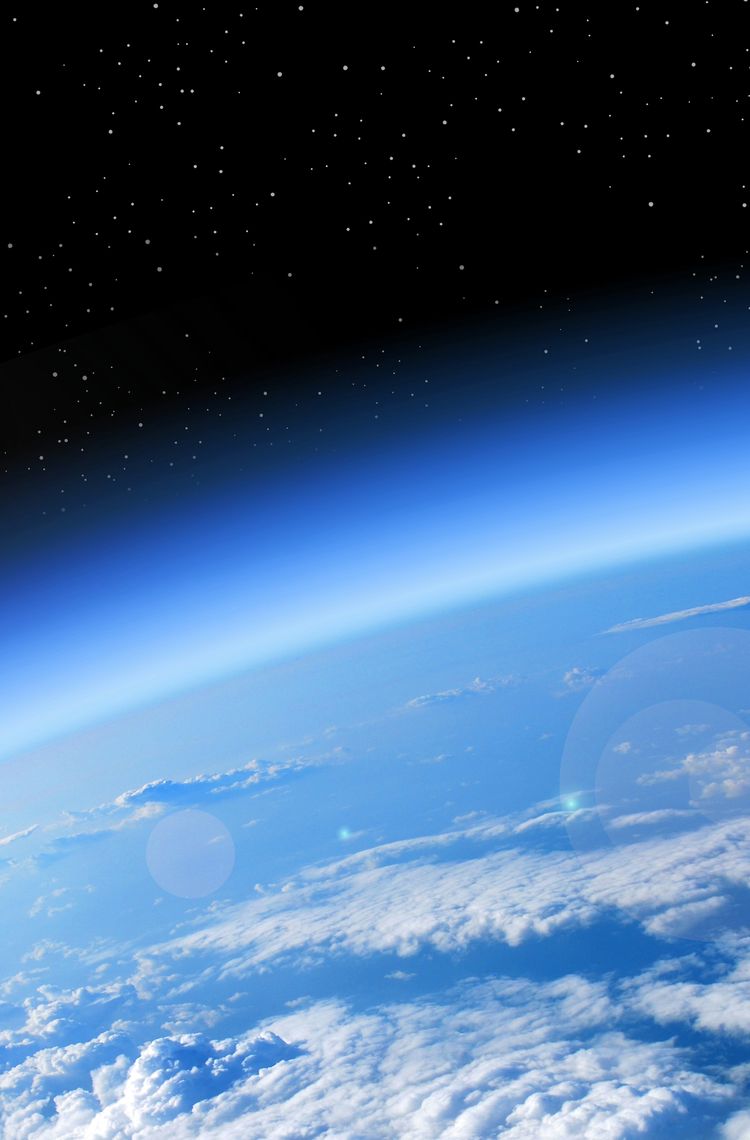When it comes to space, Airbus is always ready to challenge the status quo: whether it’s developing new manufacturing concepts to produce hundreds of satellites a year, turning Moon dust into oxygen to sustain human life on the Moon, or self-financing the next generation of very-high-resolution observation spacecraft.
As the industry continues its evolution, Airbus remains at the forefront – proactively developing flexible, game-changing technologies that help solve global challenges and make life better on Earth.
Shaping the future of space
In the telecoms domain, for example, Airbus is pioneering new types of satellites like Eutelsat Quantum and OneSat. For the first time, operators are able to completely change what their satellites do in orbit by reprogramming them to adjust the coverage area and frequency band – allowing them to serve any region, as well as adjust to new mission requirements in the blink of an eye. Previous satellites had some flexibility, but this is a step-change.
While in the field of constellations, it is their very introduction which has changed how Airbus makes satellites. Its Airbus OneWeb Satellites joint venture has rethought satellite design to produce 650 low-Earth orbit satellites for one of the largest ‘mega constellations’, providing affordable high-speed Internet access around the world. Until recently, satellites were custom designed and built individually for a specific purpose. Today, Airbus has made it possible to build satellites the way it builds planes: going from a few per year to up to a couple per day. What’s more, this new thinking has been embedded into all our products, standardising designs, building more spacecraft parts concurrently and taking a learn-fast, fail-fast test approach, to name just a few.
What about new business models? The Pléiades Neo story is one example. 20 years ago, Airbus Earth observation satellites were made purely for government customers. Today, Airbus is self-financing four, brand new very-high-resolution satellites, to keep pace with the growing desire to make use of data from space. Owned and operated by Airbus as part of the world’s largest Earth observation satellite fleet, the Pléaides Neos will provide the highest resolution imagery on the market, more often, via the OneAtlas cloud platform.
Digitising and simplifying
Right across the company, Airbus is connecting its design, manufacturing, supply-chain management and service support end-to-end, for spacecraft and aircraft alike, and this is known as DDMS (Digital Design Manufacturing and Services).
Numerous digital capabilities are at various stages of industrialisation from prototyping to implementation at scale. These range from Big data, AI, IoT, Cloud, Mixed Reality, cobots, additive manufacturing and new collaboration toolsets. Data Analytics help improve efficiency over the end to end chain using data captured via Internet of Things (IoT) sensors in its factories worldwide. ‘How’ things are done is also important. People work in multifunctional teams that develop minimum viable products in a short period of time. In other words, they quickly develop valuable solutions for a given scope.
No idea is too far-fetched, and introduction of video gaming technologies to support 3D satellite design is a prime example. By applying these COTS technologies to our business and processes, Airbus has gained three key differentiators – data fusion, real-time collaboration and virtual/augmented reality – over standard 3D software.
Making data-driven decisions
Artificial Intelligence is another digital technology bringing impressive results. It is helping Airbus monitor satellite health and learn lessons from in-orbit performance to make future spacecraft even better. Engineers draw on telemetry data pooled in a data lake to create algorithms for all stages of the lifecycle, providing actionable insights on performance. Airbus also sees AI enabling ground segment automation, key to efficient management of large or mega satellite constellations.
AI is proving equally important for Airbus’ satellite imagery services. Work first started using Google’s open-source Tensor Flow AI-algorithm for automatic cloud detection, removing manual checks to ensure clouds weren’t obscuring the image before delivery to customers. This has now evolved into automatic change detection of objects such as cars, boats or planes. What’s behind this success is the billions of square kilometres of imagery dating back to 1986 that Airbus has ‘fed’ into machine learning platforms – and the more data machines learn from, the better the result.
Space services for all
What’s more, with such a wealth of data available, Airbus is helping democratise access to satellite data. The UP42 platform brings together Earth data and analytics from multiple sources, so that developers from start-ups and SMEs to the world’s biggest brands can apply algorithms to build their own solutions.
And up on the ISS, Airbus is again making space accessible for all. Most of the ISS’ experimental facilities are inside but the Bartolomeo platform enables external payload hosting aboard the ISS providing access to an ‘in space’ environment looking out into space or back down to Earth. There is significant interest in areas ranging from Earth observation to robotics, material science and astrophysics – and often from people who thought accessing space was financially prohibitive.
Out of this world
But let’s go a step beyond… Being able to manufacture and assemble in space, using 3D printing and in-orbit robots, might sound like science fiction but Airbus is already working on making the first orbital factory, hundreds of kilometres above Earth.
With significant advantages over the traditional approach – where everything is produced on Earth and subsequently transported to space – Airbus’ work covers three main areas. The first uses 3D printers in space. These will use metal, regolith (Moon dust), or will even recycle manmade objects already in space as source material to print new parts like equipment, tooling, rovers and habitats. By the end of this decade, such printers could be deployed on the Moon to make structures for a rover or lunar habitat.
The second area is in-space assembly, which can be used to create very large structures like antennas. This requires a high level of robotic operation, which is the third area. Airbus is developing its own robotic arm and working on control using virtual reality and visual servoing. These technologies are being brought to life at Airbus’ robotic labs across Europe and the aim is to test them from a robotic facility on the Bartolomeo platform by the mid-2020s.
Another building block in extending human use of space is the Airbus-invented ROXY (Regolith to OXYgen and Metals Conversion) process. Together with partners from industry and research institutions – in a world first – Airbus has proven the ability to extract oxygen from Moon dust without using any materials from Earth. With oxygen indispensable for all human space activities, this new ROXY production method could revolutionise human activities on the lunar surface.

Protecting this precious resource
Yet, none of this is possible if we don’t look after space. Humanity needs to learn from what it’s done on Earth and make sure that space is used sustainably. Airbus believes it has a responsibility to future generations to do just that. It is supporting a range of initiatives from working with the World Economic Forum on an eco-label for space missions (the Space Sustainability Rating) to promoting space traffic management solutions that minimise the risk of collisions. It was also the first company to test technologies in orbit – a harpoon, a net and a vision-based navigation system – to clear out space junk. As space constellations become a reality, there will be an increased need to remove satellites from orbit at end of life. This is already in-built for the OneWeb constellation and Airbus has made it its business to ensure it can provide such services on all its satellites.
At the heart of all we do
Of course none of this would be possible without the thousands of creative and innovative Airbus people around the world. Airbus’ desire to continually make the impossible possible is what drives everything we do – and we salute them!
On the ground and in space, Airbus is reshaping the future of the space industry – hand in hand with our company purpose to pioneer sustainable aerospace for a safe and united world.
